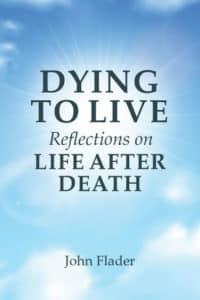
Human beings ask questions of ultimate significance such as why do they exist. We see this, for example. in young children where they intuitively ask questions like – “Mummy, where did I come from?”, or “Daddy, what will happen to granny when she dies?”.
As adults we continue to wrestle with such questions. We may wonder whether or not the human person is merely a cluster of colliding molecules constituted as a being who can think and is self-conscious, but who nonetheless is destined for death and eternal extinction. Others will reach the certain conviction that the human person possesses a spiritual and immortal soul that radically differentiates him or her from mere animals.
How we answer questions of ultimate concern will depend on the fundamental presuppositions we hold about the nature of things (reality). By ‘fundamental presuppositions’ I mean the implicit assumptions or background beliefs we hold regarding the nature of reality.
The question regarding the origin and purpose of human existence necessarily brings into focus the question of God’s existence and his relationship to us. Is God real or just a figment of our imagination? Is religion “the opium of the people” as Marx asserted, something we have conjured up to help deal with the trauma of living in a “heartless world”?

Or is God the ground of all being, the ONE who has loved us into existence and who invites us to share in his own life for all eternity?
For many years Fr John Flader has been indefatigable in his priestly ministry in Australia, not least in producing outstanding books such as the Question Time series (1-5), Journey Into Truth and Tour of the Catechism: The Creed. He has now published a new book, Dying to Live – Reflections on Life After Death, which deals with the type of questions raised above.
Dying to Live is based on a good deal of research into the Catholic Church’s teaching on what happens beyond the point of death. The book reads like a mystery thriller, whereby one cannot wait to turn the next page in order to see how the main theme unfolds.
With 162 pages, the book is relatively short and intended primarily for people without faith or belief in life after death. As such it presents a riveting account of Catholic teaching on a question of vital concern to believers and unbelievers alike.
The book’s chapter titles give a good indication of its content. They are:
- Nearing the end
- Placing a bet
- The soul
- Longing for what is
beyond - Is there a God?
- What is God like?
- Near-death experiences
- Back from the dead
- Jesus Christ
- The Bible
- The Church
- Death
- The Life Review
- Heaven
- Purgatory
- Hell
- What must I do?
The average length of each chapter is 4-5 pages. The title of Chapter 2, ‘Placing a bet’, might leave one wondering what it is about. It is an account of how Blaise Pascal (1623-1662), the famous French Catholic mathematician, scientist (he invented the adding machine) and writer, challenged sceptics of his day to bet or wager their lives on belief that God exists.
He told them that if they are wrong they had nothing to lose, as death will be the end of everything as far as they are concerned, but if they are right about God’s existence, they will have everything to gain.
The longest section in the book is Chapter 5, titled “Is there a God?”. This chapter is very significant, for if God does not exist, then we are all doomed to eternal extinction. Fr Flader draws on the findings of modern science and his own knowledge (he studied chemistry at Harvard), to show that science supports belief in an infinitely intelligent Creator God. He refers to things such as The Anthropic Principle, which indicates that our planet is fine-tuned so as to “support life, and human life in particular” (p. 38). Fr Flader also provides quotes from distinguished scientists, including Nobel Prize winners, who affirm that there is no contradiction between what science knows and belief in an all-powerful and infinitely intelligent Creator God.
A proper understanding of the relationship between faith and science is critical to helping young people recognise that there can never be a conflict between faith and reason. Recent research in the US indicates that a major factor leading young Catholics to give up the practice of the faith is that they think Catholic doctrine is incompatible with the findings of modern science.
I recommend that parents and high school teachers provide a copy of Chapter 5 of Fr Flader’s book to teenagers, as it will help them acquire a proper perspective on the relationship between faith and science.
The central and most important Chapter in Dying to Live is the one on Jesus Christ. Here Fr Flader discusses the question of the truth and historicity of the Gospel accounts of what Jesus said and did while he was on earth. It points out how the Gospels show that in his teaching, Jesus Christ claimed to be God and that his miracles demonstrated this to be the case.
In concluding this chapter, Fr Flader says: “It is clear that Jesus Christ is truly God, and so we can believe what he said, including about life after death” (p. 91).
In his laudatory Foreword to the book, James Franklin, Honorary Professor of Mathematics and Statistics at the University of New South Wales says: “This book lays out the evidence for life after death clearly, rigorously and (as the reader convinced of the urgency of the case will appreciate) succinctly, without wasting time” (p.7).
Professor Franklin gives three reasons for believing in life after death which he says come from converging directions and which Fr Flader includes in his book. They are: i) Testimonies of those who have had near-death experiences; ii) Philosophical reflection on the nature of the mind that suggests “it is the kind of thing that could have, and in fact does have, a separate and immortal existence”; iii) “Immortality is a tenet of overall Christian belief, which is itself supported by a range of evidence, from arguments for the existence of God to scriptural texts” (p.7).
Dying to Live is a book about the virtue of hope and trust in the providence and merciful love of God who will not abandon his children, if only we say sorry for our sins and desire to mend our ways by following Jesus Christ more closely.
Fr Flader has done a great job by demonstrating how Catholic doctrines on Death, Judgement, Heaven, Hell and Purgatory are positive affirmations of the wisdom and mercy of God the Creator and Redeemer. When presented in such positive light, these doctrines can be seen to cohere perfectly with the entire corpus of Catholic faith. In reading Dying to Live it becomes apparent that its author is bringing to his discourse a wealth of experience he has acquired in his priestly service to the dying and the bereaved. This is made especially clear in the book’s dedication where Fr Flader says:
“For Ellie, who was diagnosed with cancer of the brain at the age of fifteen, who firmly believed in life after death and looked forward to it with great longing, and who died at the age of twenty on the day I finished writing this book. May she rest in peace.”
Dying to Live – Reflections on Life After Death, by John Flader, BA, DCL. Connor Court, 2022.
Available from The Mustard Seek Bookshop:
www.mustardseed.org.au
